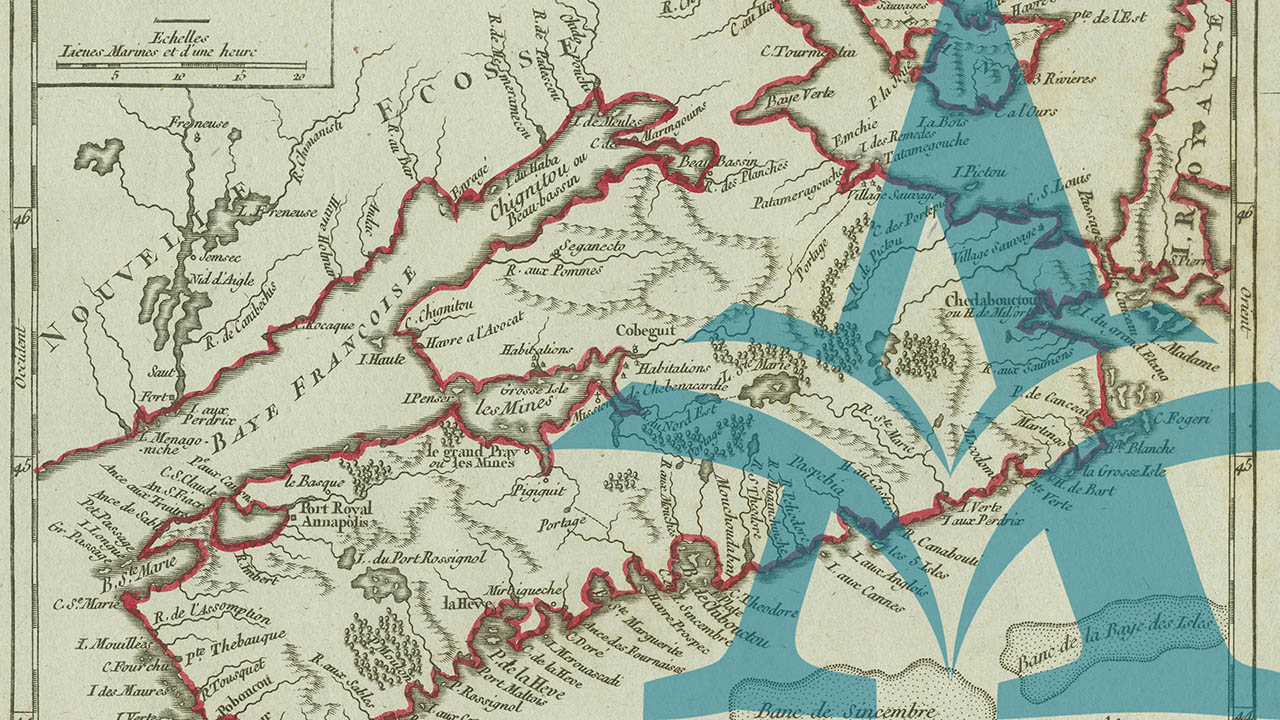

Four centuries have passed since the first French explorers reached the shores of a land they called Acadie (Acadia), a territory which included what is now Nova Scotia and Prince Edward Island, plus parts of New Brunswick and Maine. In 1605 these merchant-adventurers established the colony's first settlement, Port-Royal, a tiny European outpost situated at the head of the Annapolis Basin, a small, finger-like inlet on the south-eastern, Nova Scotian side of the Bay of Fundy.
The community's earliest years were precarious; significant settlement and growth did not really begin until the 1630s. By 1611, however, the first Jesuit missionaries had arrived to minister to the Mi'kmaq and to Port-Royal's very few resident French. In 1613, the parish of St. Jean-Baptiste — often referred to as Canada's oldest — was established.
For nearly 150 years, this parish served as a focal point for the steadily-growing local population — farmers from France who brought with them skills in agriculture, animal husbandry and land reclamation, along with a deeply-rooted fidelity to Roman Catholicism and its institutions. Collectively, and as the colony spread outward from its original nucleus around Port-Royal, the French settlers came to be known as Acadiens (Acadians).
Destruction and loss were predominant themes in the early history of Acadia. Thus, while as many as five different church structures — perhaps more — were built to serve the parish of St. Jean-Baptiste during the community's first 150 years, these buildings were all lost over time, victims of ravaging fire or hostile attack, particularly as the French and English engaged in their century-long tug-of-war for ownership of the colony. Through all these upheavals it is little wonder that few records have survived.
Mainland Nova Scotia was ceded permanently to England by the Treaty of Utrecht in 1713; Port-Royal became Annapolis Royal and the name of the colony was changed to Nova Scotia. The pivotal event in the history of the Acadian people, however, came in 1755 with the Grand Dérangement or Expulsion of the Acadians.
Beginning in the autumn of that year, and continuing intermittently over the next few years, most of the Acadian French — men, women and children — were rounded up by British and New England troops, embarked on waiting transport vessels, and removed from the colony that was their home. The vessels carried them instead to widely dispersed destinations, including New England, the West Indies, Great Britain and France.
This climactic episode guaranteed the almost complete destruction, loss or alienation of whatever scattered records might have been created within the isolated, agrarian-based communities, and which otherwise might have survived earlier troubles in the colony.
This project was made possible in part through the Canadian Culture Online Program of Canadian Heritage, Library and Archives of Canada and the Canadian Council of Archives.
banner image: Maps - 200400434 'L'Acadie' map of Acadia
Nova Scotia Archives — https://archives.novascotia.ca/acadian/
Crown copyright © 2025, Province of Nova Scotia.